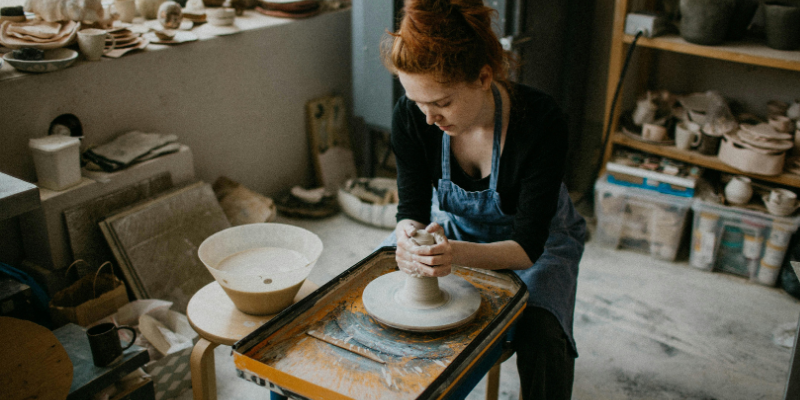Flow State: 5 Surprising Truths That Will Change How You Work and Live
What is flow state?
We've all been there. You're so engrossed in an activity that the world around you seems to fade away. Time dissolves, distractions disappear, and you are fully present, performing at your peak. This universal human experience is what psychologists call "flow"—a state of total immersion and optimal enjoyment in an activity. For many of us, these moments of being "in the zone" feel powerful but also mysterious, like a happy accident we can't control.
While it might seem like a random spark of inspiration, modern research reveals that flow is not an accident. It's a predictable state that can be cultivated intentionally. Scientists have identified specific triggers and conditions that make flow more likely, and some of their findings challenge our common assumptions about performance, creativity, and even happiness.
This article will explore five science-backed truths about flow that will change how you approach your work, hobbies, and personal growth. These insights move beyond theory and offer practical strategies to help you engineer more of this deeply rewarding state into your daily life.
1. Counterintuitively, Using Your Strengths Makes You More Innovative
A common belief in business, backed by research on long-term expertise, is that over-relying on your strengths can lead to "cognitive entrenchment" or rigidity. But this is only half the story. A 2023 diary study by Liu et al. revealed that on a daily basis, the opposite is true: employees who used their strengths more were also more likely to engage in innovative behavior.
The study defines innovative behavior as an activity that "necessitates employees to explore novel knowledge to maintain cognitive flexibility," the very opposite of routine work. The key is the mechanism at play: using your strengths puts you into a state of flow. It is this state of deep, enjoyable engagement that, in turn, fosters innovative behavior.
This finding demands a fundamental shift in perspective. Instead of focusing on fixing weaknesses to become more creative, the most effective path to innovation is to lean into what you already do best, creating the optimal conditions for flow to emerge.
2. Finding Flow Isn't Magic—It's a Formula
Flow isn't a mystical state reserved for artists and elite athletes; it's the result of a precise balance between challenge and skill. When you're in a situation where the challenge far exceeds your current skill level, you experience anxiety. Conversely, when your skill level is much higher than the challenge presented, you experience boredom.
Flow occurs in the narrow channel between these two states. Research suggests there's a specific, practical "formula" for finding it: the challenge should be just slightly greater than your skill level. Some researchers have even quantified this optimal gap at around 4%. A concrete example illustrates this perfectly: if you typically run a 10-minute mile, aiming to run one 4% faster—a 9-minute, 36-second mile—is a challenge that can pull you directly into the flow channel. It's demanding enough to require full concentration but not so difficult that it becomes overwhelming.
This 4% rule is the engine behind why using your strengths is so effective. When you operate within your strengths, you are naturally better equipped to take on challenges that are just beyond your current skill level, putting you squarely in the flow channel. By continually adjusting the difficulty of our tasks to stay in that optimal zone, we can systematically engineer the conditions for peak experience.
3. Solitary Flow Is Good, but Social Flow Is Better
While we often picture flow as a solitary pursuit—a writer lost in their work or a programmer deep in code—some of the most powerful flow experiences happen with others. This is the world of "social flow," and research suggests it is a more profound and enjoyable state.
A 2010 study by Charles J. Walker found that when people recalled their flow experiences, they rated social flow as significantly more enjoyable and joyful than solitary flow. To rule out other variables, an experiment was conducted where the levels of challenge and skill were held constant for both solitary and social activities. The result was the same: social flow was still reported to be more enjoyable. As the study concludes:
Solitary flow, while quite enjoyable, is not as enjoyable as social flow.
The Walker study identified two main types of social flow:
Co-active flow: Performing a task concurrently with others but without direct interaction, like "running in a pack of people."
Interactive flow: Performing a task that requires cooperation and interdependence, such as "playing a game of pick-up basketball."
Interestingly, the study also found that co-active tasks where conversation was possible (like team golf) were rated as significantly more joyful than those where it wasn't (like team swimming), highlighting that even small elements of interaction can elevate the experience.
The research found that highly interdependent "interactive" flow was the most joyful of all. The heightened joy of interactive flow makes perfect sense when viewed through the challenge/skill formula. Highly interdependent tasks, like playing basketball, add a dynamic layer of social challenge—coordinating with, predicting, and reacting to others—on top of the physical task itself, creating a richer and more potent opportunity for flow.
4. Gratitude Is a Powerful Performance Enhancer
Concepts like gratitude are often dismissed as "soft skills" with little impact on tangible performance. However, the 2023 study by Liu et al. revealed a stunning connection between gratitude, strengths, and flow. The researchers measured a fluctuating, state-based variable they called daily "Gratitude Toward the Organization" (GTO).
Their key finding was that the positive relationship between using your strengths and experiencing flow is intensified for employees with a higher level of daily GTO. In simpler terms, on days when people felt more grateful for their workplace, the act of using their strengths was even more likely to get them into a state of flow, which then led to more innovation.
The implication is profound: a positive mindset like gratitude is not just a feel-good emotion. It acts as a powerful catalyst that amplifies the positive effects of our actions. It directly impacts our ability to achieve deep focus, perform at our best, and be more creative. Gratitude, it turns out, is a hard-nosed performance enhancer.
5. Your Character Strengths Are Your Personal Fast-Track to Flow
If flow has a formula, your character strengths are the key to solving the equation effortlessly. The research suggests a profound, intuitive connection between embracing your core identity and achieving a state of flow. Character strengths are the handrails toward the flow experience, and flow becomes a portal to greater well-being.
This makes perfect sense. When you engage in an activity using your core abilities and authentic characteristics—your strengths—you are naturally setting the stage for the perfect balance of skill and challenge. People who use their signature character strengths more often tend to go into flow more often and more easily. The act feels natural and engaging because it is an expression of who you are.
The most actionable advice, then, is to start with your strengths. By identifying your own signature strengths (take the free VIA survey here) and finding more ways to use them each day, you are building a reliable, personal pathway to more frequent and effortless flow experiences.
Engineering Your Own Optimal Experience
Flow is not an accidental state of grace but what researchers call an "optimally enjoyable affective and cognitive state" that we can actively cultivate. The science shows us that by understanding its surprising triggers, we can move from hoping for flow to engineering it.
Flow is the portal to greater well-being, and the path is clearer than ever: leverage your innate character, master the balance of challenge and skill, and amplify the experience through shared goals and a grateful mind. The path to peak performance isn't about fixing your flaws; it's about engineering the conditions for flow.
Now that you have the blueprint, the only remaining question is: which tool will you use first?


